

Congaree magic
A misunderstood gem is America’s best ‘worst’ national park








































THE MAGAZINE FOR COOPERATIVE MEMBERS
VOLUME 79 • NUMBER 8
(ISSN 0047-486X, USPS 316-240)
Read in more than 620,000 homes and businesses and published monthly except in December by
The Electric Cooperatives of South Carolina, Inc.
808 Knox Abbott Drive Cayce, SC 29033
(803) 926 -3175 fax: (803) 796 - 6064 letters@scliving.coop
EDITOR
Sarah Ellis Owen (803) 739-3040
sarah.owen@ecsc.org
FIELD EDITOR Josh P. Crotzer
PUBLICATION COORDINATOR Sierra Hayes
ART DIRECTOR Sharri Harris Wolfgang
DESIGNER
Rachael Arblaster
PRODUCTION
Andrew Chapman
WEB EDITOR
Chase Toler
COPY EDITORS
Jennifer Jas, Jim Poindexter
CONTRIBUTORS

2025 |aug
Miranda Boutelle, Hayden Davis, Jan A. Igoe, L.A. Jackson, Kevin McGee, Belinda Smith-Sullivan, Jeff Wilkinson
PUBLISHER
Avery Wilks
ADVERTISING
Hyatt Drake (803) 260-3393 ads@scliving.coop
NATIONAL REPRESENTATION
American MainStreet Publications (512) 441-5200
Paid advertisements are not endorsements by any electric cooperative or this publication. If you encounter a difficulty with an advertisement, inform the Editor.
ADDRESS CHANGES: Please send to your local co-op. Postmaster: Send Form 3579 to Address Change, c/o the address above.
Periodicals postage paid at Columbia, S.C., and additional mailing offices.
© COPYRIGHT 2025. The Electric Cooperatives of South Carolina, Inc. No portion of South Carolina Living may be reproduced without permission of the Editor.
SOUTH CAROLINA LIVING is brought to you by your member-owned, taxpaying, not-for-profit electric cooperative to inform you about your cooperative, wise energy use and the faces and places that identify the Palmetto State. Electric cooperatives are South Carolina’s — and America’s — largest utility network.
ANNUAL SUBSCRIPTIONS: $4.95 members, $8 nonmembers
14 Magic in the details
Don your bug spray, adjust your expectations and open your mind to the misunderstood beauty of South Carolina’s Congaree National Park.
Updates from your local co-op.
6 AGENDA
A trip to the nation’s capital was extra sweet for one high school senior thanks to electric co-ops.
7 DIALOGUE
A place worth preserving
Some special places are best left untouched, or nearly so. 8 ENERGY Q&A
Cool savings
You don’t have to be stuck between convenience and conserving energy when it comes to one of your most-used appliances.
Summer seafood light meals
Now is not the time to toil over a hot stove. Think on the lighter —and cooler—side of the kitchen with these easy seafood meals.
12 SC FIRST PERSON
Grief, grit and teal
How a trip to the College World Series and an underdog team in teal helped a father and daughter heal together.
13 SC STORIES Fishing outside the box
This Upstate fishing guide is known to drop lines in unexpected waters during his lunch break.

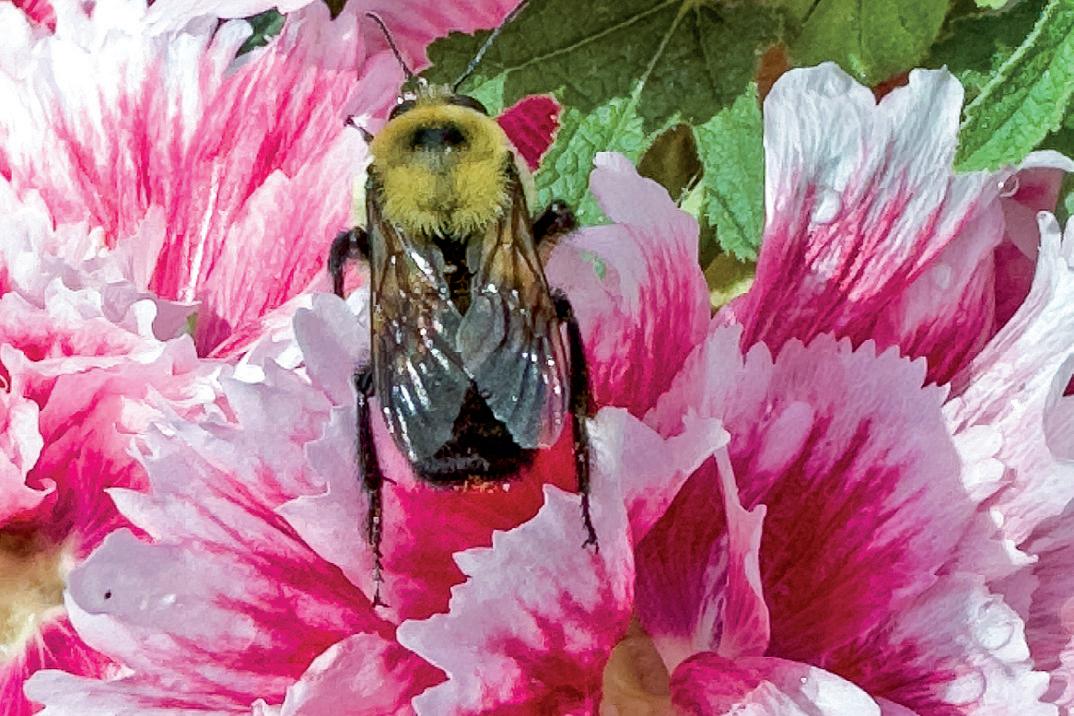
The hollyhock challenge
Are they a pain to grow and protect? Yes. But are hollyhocks worth the trouble? Judging by their beauty, absolutely yes.
22 HUMOR ME
Which way to the buzzard buffet?
Is your little dog so cute you could just eat him up? The vultures think so, too, Jan A. Igoe warns in a classic column from 2013.
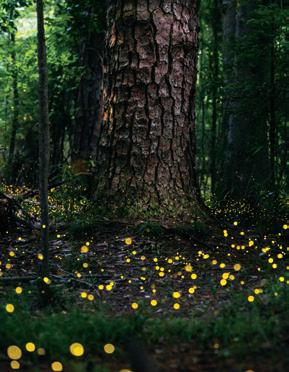
MID-CAROLINA Building new pathways

mcecoop.com
LEXINGTON OFFICE
P.O. Box 669
254 Longs Pond Road Lexington, SC 29071
DUTCH FORK OFFICE
7524 Broad River Road Irmo, SC 29063
CUSTOMER SERVICE
(803) 749-6400
(888) 813-8000 Toll Free
GENERAL INFORMATION (803) 749-6555 (888) 813-9000 Toll Free
REPORT OUTAGES (803) 749-6444
(888) 813-7000 Toll Free
BOARD OF TRUSTEES
Marvin W. Sox, Chairman
Alan R. Lunsford, Vice Chairman
Donette B. Kirkland, Secretary
J. Allan Risinger, Treasurer
J. Carey Bedenbaugh, Jr.
Eddie C. Best, Jr.
Kenneth E. Lindler
Mark A. Svrcek
Justin B. Watts
CHIEF EXECUTIVE OFFICER
Bob Paulling
The mission of Mid-Carolina Electric Cooperative, Inc., a not-for-profit member-owned electric distribution utility, is to deliver reliable, costefficient utilities and innovative solutions to our members.
Mid-Carolina Electric is an equal opportunity provider and employer.
CO-OP NEWS EDITOR
Katrina Goggins katrina@mcecoop.com


Have you ever heard someone compare the way our brain works to an electrical grid? It tracks.
Our central nervous system generates and distributes signals through a network of neurons to the rest of our body, powering thought, communication and action.
Just as Mid-Carolina Electric continually builds new connections in our electrical distribution system to ensure reliable power, we also help build pathways of learning and opportunity in our community.
In June, Mid-Carolina Electric sponsored four local high school students Emily You, Dasha Hutcheson, Aroosh Qazi and Taryn Smoak nation’s capital and surrounding land marks on Washington Youth Tour. They were joined by 67 other students repre senting South Carolina’s electric coopera tives on visits to historic and educational sites such as George Washington’s Mount Vernon, Capitol Hill and the Smithsonian museums in Washington.
For You, a rising senior at River Bluff High School who immigrated here from Korea when she was in the 10th grade, the trip was an opportunity to learn more about her new home.
“I didn’t really know about American culture or American history,” she

says. “Going to the Lincoln Memorial, the World War II Memorial and the museums, I learned so much.”
You wasn’t the only student sponsored by Mid-Carolina Electric for whom English is their second language. Qazi’s family moved here from Japan two years ago. She was inspired by Mike Schlappi, a Paralympic gold medal basketball player who spoke to the students on their last night in Washington.
“It was really good for me,” says Qazi, another rising senior at River Bluff. “I learned from him. I have a language barrier, but I can do everything.”
Building those types of pathways is why Mid-Carolina Electric invests in edu








Great ideas need great support. So each year, we award Bright Ideas grants to help fund innovative education projects that might otherwise not be possible. Teachers in our service area who anticipate equipment, supply or curriculum needs are encouraged to apply. And we ask our members to help spread the word, letting educators know we’re all in their corner.
Check eligibility and apply for K–12 education grants at www.mcecoop.com/in-the-community/bright-ideas
APPLICATION DEADLINE: SEP 15, 2025
www.mcecoop.com | (803) 749-6400
SC | agenda

Big day(s) in D.C.
Washington Youth Tour makes an impact on student
MONDAY, JUNE 16, HAD ALREADY BEEN an eventful day for Natalyia Jordan. After a morning tour of George Washington’s Mount Vernon and an afternoon at Arlington National Cemetery, she and the other 70 South Carolina high school students on Washington Youth Tour had a few hours to rest and freshen up before an evening dinner cruise down the Potomac River.
But first, an assortment of confections from Georgetown Cupcake were waiting for the Palmetto State contingent inside their hotel, making Jordan’s 17th birthday that much sweeter.
“It’s the best birthday I’ve ever had,” says Jordan. “This is the most ‘happy birthdays’ I’ve ever gotten. People who aren’t even my friends were telling me happy birthday. It’s the most known I’ve ever felt.”
Washington Youth Tour is an annual experience for rising high school seniors sponsored by the state’s electric cooperatives. Jordan represented Berkeley Electric, one of 21 electric cooperatives and associations sponsoring South Carolina students.
The five-day, all-expenses-paid trip each June gives students the opportunity to learn how government works, walk in the footsteps of the Founding Fathers and honor those who have made the ultimate sacrifice for freedom. They
also spent a day on Capitol Hill, visiting congressional offices, touring the Capitol Complex and meeting U.S. Sens. Lindsey Graham and Tim Scott on the Capitol steps.
On their final night, South Carolina’s students were among more than 1,800 students from 44 states gathered at the Gaylord National Resort and Convention Center to hear from national cooperative leaders, former Youth Tourists and paralympic gold medalist Mike Schlappi. Schlappi, who was shot in the chest when he was 14 and lost the ability to walk, gave a motivating keynote address and challenged the students to overcome difficult circumstances.
“I’ve had a low point in my life where I felt like, ‘What’s the point of anything?’ ” says Jordan. “(Schlappi had) a low point, and he’s risen from that and he’s doing amazing things. It was inspiring.”
Jordan says the entire trip through the nation’s capital and surrounding landmarks has made an impact on the way she feels about her country and herself.
“It’s made me more patriotic and also makes me feel less afraid to be myself,” says Jordan. “If you are yourself, you will attract the right people, and I feel like I’ve done that during this trip.”
See our 2025 Washington Youth Tour image gallery at SCLiving.coop/wyt25
JOSH P. CROTZER
MEMBERS SPEAK ON THE COOPERATIVE DIFFERENCE

Jennifer Wilson
AIKEN ELECTRIC MEMBER
MEMBER FOR: 18 years
HOMETOWN: Graniteville
OCCUPATION: Teacher
Care in the chaos
When Hurricane Helene hit Jennifer Wilson’s home last fall, all she could hear was the sound of trees crashing.
A look outside her window revealed downed trees everywhere. They took out her power and made repairs difficult. But Wilson says Aiken Electric Cooperative crews quickly got to work— sawing through wood and even wading into one of her ponds to drag out trees felled by the historic storm.
“You can’t ask for better service than that.”
“We are always confident that they’re going to come and they’re going to come right away,” Wilson says. “I love it.”
—JENNIFER WILSON
To her surprise, crew members knocked on her door after days of work to check on her.
“After all that work, they wanted to know, were we OK? Were we satisfied?” Wilson says. “You can’t ask for better service than that. You don’t get that from anybody.”
Wilson says the experience makes her grateful to be a co-op member.
“They take you as … a family member,” Wilson says. “They treat you with respect. They don’t want you to be uncomfortable. They don’t want you to be without, even though they’re going to be without and they’re going to be uncomfortable.”
WHAT’S YOUR STORY?
Scan this QR code or visit SCLiving.coop/stories to share what you love about your co-op. Entries may be published in future issues of South Carolina Living, online and on social media.
A place worth preserving
YOU WON’T CATCH ME at Congaree National Park this time of the year; I can’t stand the mosquitoes. But in the 15 years I’ve lived in Columbia, I’ve adopted Congaree as one of my special places.
It’s where, in less buggy seasons, I’ve spent humid hours walking alone and with friends, slipped in relentless mud, been turned around by flooded trails, practiced training my dog and learned to appreciate big, knobby trees and quiet forests. There’s a lot I haven’t done there yet, either. I’ve never camped out or kayaked at the park, but at least I also haven’t been chased by a wild hog.
Congaree National Park is one of the places where I grew my love of the outdoors. And it’s a place where, long before it became a national park, a young Alex Sanders grew up duck hunting and learning from his hunting-guide father about principles of ecology.
Sanders, a former state lawmaker, judge and College of Charleston president, is the man at the center of what is, these days, a relatively little-known tale behind the creation of Congaree National Park. In the early 1970s, Sanders organized a swamp expedition near the confluence of the Congaree and Wateree rivers that purported to have discovered the call of the rare, possibly extinct ivory-billed woodpecker. That the precious bird might have existed in the forest, the story has been told, helped save the land from logging so that it eventually was enshrined first as a national monument and later, in 2003, a national park.
“It was my mission to save the trees,” Sanders says. “What I wanted was for it to be left alone, not made a tourist attraction.”
Sanders believes Congaree National Park would’ve been created with or without him and his seeming encounter with the ivory-billed woodpecker. And it’s true that a number of compelling forces at work over time politics, business, environmentalism and more did the work of preserving the park’s 27,000 acres.
My most special experience at Congaree happened several years ago with my colleagues from The State newspaper when we witnessed the annual mating show of the park’s synchronous
fireflies. You can’t comprehend the mesmerizing beauty of that event until you’ve stood, hushed, in the damp, darkened forest and watched with your own eyes the fireflies glow in unison with one another. This spectacle of synchronicity happens in only a few places on this continent, and Congaree park is one of them.
It’s a breath-taking scene I urge people to witness if they get the opportunity.
These days, admission to see the fireflies’ display is restricted by a lottery to limit the impact of crowds in the forest. I love that many people are getting to experience this dreamy phenomenon, and I’m more than grateful that essential steps are being taken to protect the flashy critters and their environment from their adoring fans.
Alex Sanders never wanted to see this beautiful place overwhelmed by visitors who would endanger the resources that he and others strived to save. I can’t blame him. My whole heart agrees with him when he says, “We need places that have been left alone.” I’d say the same for any of our national parks and for much of the land beyond them, even down to the simple, wooded rural acres in places like where I grew up and where many South Carolina co-op members live, too.
I’ll bet 50 weeks out of the year, there’s little danger of Congaree being over-trodden. It is, after all, one of the lesser-known and most poorly reviewed (though unjustly so) national parks in the country, as you’ll read in this month’s cover story. But the annual two weeks of synchronous firefly viewing magnetize crowds to the forest, and there’s something to be said for the exposure to this uniquely beautiful place we have in our backyard here in South Carolina.
And whether it was by activism, politics, business, a bird or some lucky combination of reasons, Congaree National Park has been preserved for those fireflies, for me, for you, and for many generations to come, and I am thankful.

SARAH ELLIS OWEN Editor, South Carolina Living
There’s something to be said for the exposure to this uniquely beautiful place we have in our backyard.
Cool savings
BY MIRANDA BOUTELLE
QWhat are some ways I can improve the efficiency of my refrigerator and freezer?
AWe often find ourselves stuck between convenience and conserving energy. While you can upgrade to newer refrigerators or freezers, your care and equipment habits are just as important to saving energy.
Here are tips to keep your equipment running efficiently and ways to limit the overuse of refrigeration in your home.
The U.S. Department of Energy helps us understand what to look for in our existing equipment and new appliances. Generally, the larger the refrigerator, the more energy it uses. The most efficient models are typically 16 to 20 cubic feet. Models with the freezer on top tend to use less energy than bottom freezers or side-by-side units. A refrigerator that is 15 years old or older uses about 35% more energy than an Energy Star-certified model.
Let’s explore ways to keep your refrigerator running efficiently.
KEEP IT ORGANIZED. One of the biggest issues with refrigerator energy use is frequently opening the door or keeping it open. An organized fridge makes food items easier to find, minimizing open-door time and keeping cold air inside. Place items in the same spots so they are easier and faster to find. I tell my kids to take a quick look inside at the options and close the door while deciding what to eat.
KEEP IT CLEAN. Regularly cleaning the gasket the flexible strip around the perimeter of the fridge door ensures a tight seal between the door and the unit, keeping cold air inside. If the gasket is not sealing tightly, it should be replaced. Removing and cleaning the vent at the

bottom of the unit can help with airflow. For the coils at the back, use an extended cleaning brush instead of moving the fridge and risking injury.
KEEP FOOD SAFETY IN MIND. The Department of Energy recommends setting your refrigerator temperature between 35 and 38 degrees and your freezer at 0 degrees.


If you have a second refrigerator or freezer, consider the following to help you save energy:
u Do you need it plugged in yearround? Perhaps you can keep it empty and unplugged for part of the year. Maybe you only need it during the holiday season. Unplugging it for the months you aren’t using it will save energy, and you’ll still have it as a backup when you need it.

u If you are a hunter or buy meat in bulk, set a goal to empty your freezer before you restock. This habit allows you to avoid food waste and unplug the extra appliance when it is not needed.
u Consider the location. Keeping the second fridge or freezer in a cool basement versus a hot garage requires less energy.
Instilling simple cleaning and food storage habits is an easy way to be more efficient with your in-home refrigeration.
MIRANDA BOUTELLE writes on energy efficiency topics for the National Rural Electric Cooperative Association, the national trade association representing nearly 900 electric co-ops.






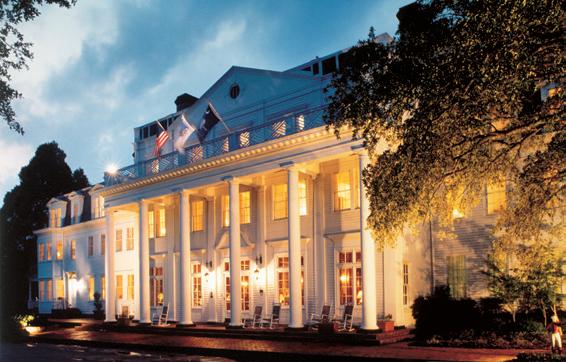

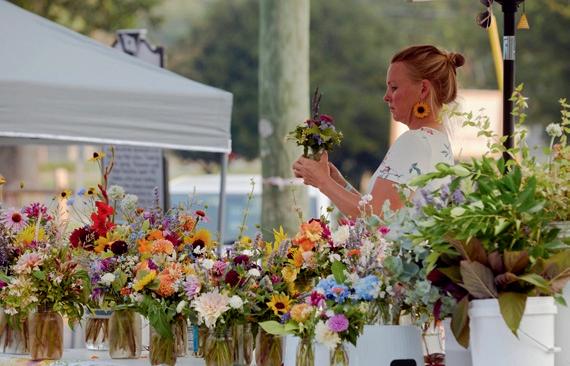


GRAPEFRUIT, PROSCIUTTO AND SEARED SCALLOPS SALAD
SERVES 4
2 ruby grapefruits, supremed, reserve juice
2 cups arugula, washed
¼ cup red onion, sliced
1 tablespoon Dijon mustard
½ tablespoon honey
4 tablespoons olive oil, divided Kosher salt
Fresh ground black pepper
16 large scallops, patted dry
6 slices prosciutto, sliced lengthwise
In a medium bowl, combine grapefruit, arugula and sliced onions. In a small bowl or jar, combine reserved grapefruit juice, mustard and honey. Slowly whisk 3 tablespoons olive oil into the wet ingredients until emulsified. Add salt and pepper to taste. Set aside.
Season scallops with salt and pepper and allow to come to room temperature before cooking, about 20–30 minutes. In a large skillet over medium-high heat, add 1 tablespoon olive oil and cook prosciutto until crisp, about 4 minutes. Transfer to a paper towel-lined plate. In the same skillet over medium heat, carefully add scallops. Cook until lightly brown, springy to the touch and soft in the center, 2–3 minutes. Turn over and cook an additional 2–3 minutes until slightly opaque.
Toss salad with vinaigrette and arrange on a large salad platter, placing scallops on top and sprinkling with prosciutto. Serve immediately.
CHEF’S TIP What does it mean to “supreme” a grapefruit, orange or lemon? Supreming is the process of removing the juicy segments of the fruit from the peel and inner membrane. Once the fruit has been peeled, use a sharp paring knife to carefully slice down each side of the membrane to release the fruit segment.
SEAFOOD
Summer light meals
SHRIMP AVOCADO TACOS
SERVES 4
3 tablespoons olive oil, divided
1½ teaspoons chili powder
Kosher salt
¼ teaspoon cayenne pepper (or less depending on preference)
1½ pounds extra-large shrimp, peeled, deveined and tails removed
8 or more 6-inch corn tortillas
2 cups chopped red cabbage
2 avocados, peeled, pitted and diced
Salsa, store-bought or homemade (see recipe below)
2 limes, cut into wedges
Sour cream
In a large bowl, combine 1½ tablespoons olive oil, chili powder, salt, cayenne and shrimp. Mix until shrimp are completely coated. In a large skillet over medium heat, add remaining oil. Add shrimp in a single layer and cook 1–2 minutes on each side until opaque and pink. (You may have to cook in batches to prevent crowding the shrimp.) Transfer cooked shrimp to a platter and keep warm.

Warm tortillas according to package instructions. To serve, add cabbage to each tortilla, three shrimp, a spoonful of avocado, salsa, lime wedge and sour cream (optional).
EASY HOMEMADE SALSA
This recipe lasts in the refrigerator for up to a week. Serve with chips or use as a condiment for chicken, fish, tacos or scrambled eggs. Make lots—it goes fast!
2 15-ounce cans fire-roasted diced tomatoes
1 white onion, quartered or roughly chopped
2 cloves garlic, large minced
1 jalapeño or serrano pepper, chopped
½ bunch cilantro, chopped
1 tablespoon fresh-squeezed lime juice
Kosher salt, optional
Place one can of tomatoes and remainder of ingredients into the bowl of a blender; blend until smooth. Pour in second can of tomatoes and stir to combine. (This is for a chunkier salsa.) Adjust seasoning by adding more lime juice and/or salt. Put into a storage container and refrigerate, preferably overnight, to allow flavors to fuse.
BY BELINDA SMITH-SULLIVAN
Summer is for spending time outdoors doing fun things—and not toiling over a hot stove. Let these quick and easy recipes help you take advantage of the many joys of summer.
FISH PICCATA
SERVES 4
1½ pound haddock fillet or other thin white fish (sole, flounder, hake)
Kosher salt
Fresh ground black pepper
1 teaspoon dried oregano
1 teaspoon smoked paprika
½ teaspoon garlic powder
½ cup all-purpose flour, for dredging
3 tablespoons olive oil
3 tablespoons unsalted butter, divided Juice of 2 lemons
½ cup chicken broth
¼ cup capers, drained
Fresh chopped parsley, for garnish
Thinly sliced lemon wedges, for garnish
In a small bowl, combine salt, pepper, oregano, paprika and garlic powder, and season fish all over. Coat both sides of fish with flour, shaking off excess. In a large cast-iron skillet over medium-high heat, add 3 tablespoons oil and 2 tablespoons butter. Add fish and cook 2–3 minutes on each side until firm and flaky. Transfer to a paper towel-lined platter. Add remaining butter to skillet and lower heat to medium. Add lemon juice, broth and capers and cook briefly. Return fish to pan and spoon sauce over fish. Serve directly from skillet, garnished with parsley and lemon wedges


LOBSTER SALAD LETTUCE CUPS
SERVES 4
¼ cup mayonnaise or aioli
1 stalk celery, finely diced
2 tablespoons freshsqueezed lemon juice
2 tablespoons finely chopped chives, plus more for garnish
2 tablespoons finely chopped parsley
Kosher salt
3–4 large lobster tails, steamed, shelled and cut up
Iceberg lettuce head (can also use bibb or butter lettuce, if preferred)
Lemon wedges, for serving 1 avocado, sliced, for garnish
In a large bowl, combine mayonnaise, celery, lemon juice, chives and parsley, and season with salt to taste. Fold in lobster meat.
Cut out the hard core at the top of the lettuce, and cut lettuce in half from the top down. Carefully peel off sets of three layers of lettuce leaves to form lettuce cups, placing them on a serving platter. Scoop lobster salad into lettuce cups and garnish with lemon wedges, avocado slices and additional chopped chives. (Alternatively, serve lobster salad on buns for an original lobster roll experience.)
Grief, grit and teal
How
Coastal Carolina helped us heal
BY KEVIN McGEE
I DIDN’T ARRIVE IN OMAHA as a Coastal Carolina fan. Living in Lexington, 90 minutes from the school’s Conway campus, I admired the Chanticleer baseball team’s gritty underdog spirit. But I wasn’t a true supporter until that changed over three unforgettable days at the College World Series in June.
PROVIDED BY KEVIN Mc GEE
I’ve been a lifelong baseball fanatic, playing through high school and college, chasing the game in amateur leagues and coaching at every level, including a 2012 state championship team in North Carolina. Baseball has always been a steadying force for me, where I find stability during life’s toughest moments. The connection to baseball became the bridge that slowly closed the distance between my father, who battled demons, and me. There were nights when I bore the weight of his anger, when his drinking turned home into a hard and hollow space.

Over time, baseball gave us a shared language when words failed. Now, with him gone, the game is both a comforting salve and an unhealed wound, connecting me to him through memories of what we shared and what we never resolved.
A similar connection is now present between me and my daughter, Kiley. Her love for baseball grew naturally, rooted in the dugouts she roamed as a child, watching her brother play and me coach. Though she didn’t play much, the game is in her bones, giving us a bond deeper than words.
field was set, before grief fully settled, hoping for something to believe in. When Coastal Carolina, a school just down the road from us, earned its spot in Omaha, it felt like fate. The team’s scrappy, resilient spirit became a symbol of fighting through pain, a beacon for us in our sorrow. The Chanticleers were more than a team to us they were a lifeline, helping us find peace amid our grief.
Her quiet pain broke me in ways I wasn’t prepared for. So, I turned to baseball, as I always have, to heal.
The team’s journey through the tournament felt personal. They played with heart, fueled by grit and purpose, covered in teal. They burst into the bestof-three finals against an LSU program brimming with power and pedigree. We believed in the underdogs, we needed to believe, as their fight mirrored our own. The championship games were thrilling, gritty and hardfought, a testament to Coastal’s character. They had a chance to pull off the upset, falling short but proving they belonged.
Dad passed on May 29, when Kiley was stuck in Omaha for a 10-week clinical rotation for her medical laboratory science program at Charleston Southern. Distance and scheduling left her unable to make the journey home for her Poppa’s funeral. It crushed her not to be able to say goodbye.
Her quiet pain broke me in ways I wasn’t prepared for. So, I turned to baseball, as I always have, to heal. The College World Series became more than a trip; it was a way for Kiley and me to help each other in the shadow of loss, through the game we both love.
I bought tickets for the championship series before the
I came to Omaha as a neutral observer. I left a fan. Not just of a team but of a program, a coach and a culture that values the right qualities.
Kiley and I cheered, hoped and connected through Coastal’s incredible run. Those moments in Omaha weren’t just about baseball. They were about father-daughter time, working through the pain of losing Poppa. We found solace in the stands, rallying for a team that embodied resilience. For that, I’ll be forever grateful to Coach Kevin Schnall and his players. They gave us healing, more than any championship ever could.
Taylor LeBlanc
AGE: 33.
RESIDES IN: Travelers Rest.
CLAIM TO FAME: As a fishing guide for Mt. Yonder Fly Fishing, LeBlanc has landed his customers on big fish. LeBlanc is known to fish in downtown Greenville’s Reedy River during his lunch breaks.
BEST CATCH: LeBlanc made a last cast one day when his 6-month-old daughter, who had come alongside his wife, needed to go home. It was worth it—he landed a 10-pound largemouth bass.
CO-OP CONNECTION: He grew up as a member of Laurens Electric Cooperative.
Fishing outside the box
Stepping out for his lunch break, rod in hand, Taylor LeBlanc goes to fish in spots few anglers attempt. Along downtown Greenville’s Reedy River, LeBlanc hunts his favorite species, largemouth bass. He prefers to fish a stretch near the city’s famous waterfall, with lightweight tackle.
LeBlanc’s fishing spots are unique but effective. The largest of the largemouth he’s snagged on the Reedy weighed about 6 pounds—not a bad catch.
“At first it was, ‘Go have fun pulling a few fish during lunch.’ And then it turned into, ‘Hey, there’s some nice fish in here,’ ” LeBlanc says.
LeBlanc got hooked on fishing as a kid in Louisiana. There, he fished for redfish and speckled trout in the state’s coastal marshes. South Carolina’s largemouth bass, LeBlanc says, compares to the fight of a redfish.
“Once a largemouth gets over about 5, 6 pounds, they’ll really put up a good fight. And that’s really what I love,” he says.
Rather than traveling to large lakes, such as Lake Hartwell, LeBlanc sticks to smaller waters. He keeps a compact rod under the driver’s seat of his car, just in case he stumbles upon a spot.
“What I’ve found is a lot of the local lakes, the water is clear, so I can sight fish for them. That’s generally how I like to do it, being able to really hunt the fish,” LeBlanc says.
LeBlanc doesn’t only catch fish; he helps to conserve them. He’s on the board of South Carolina’s chapter of the Native Fish Coalition, an organization that protects and restores native fish species. He’s also a former vice president of Greenville’s Trout Unlimited chapter, a similar organization focused on trout populations.
He also offers his expertise as a fishing guide for Mt. Yonder Fly Fishing. In his first largemouth trip of the year, LeBlanc helped his client land an 11-pounder.
“To put somebody on an 11-pound bass out the gate was an incredible feeling of validation that it could be done and that it’s something I can take people to do,” LeBlanc says. —HAYDEN
DAVIS

PHOTO BY MATTHEW FRANKLIN CARTER
Find out how to book a tour with LeBlanc or other Mt. Yonder fishing guides by visiting mtyonder.com or calling (864) 816-0506.
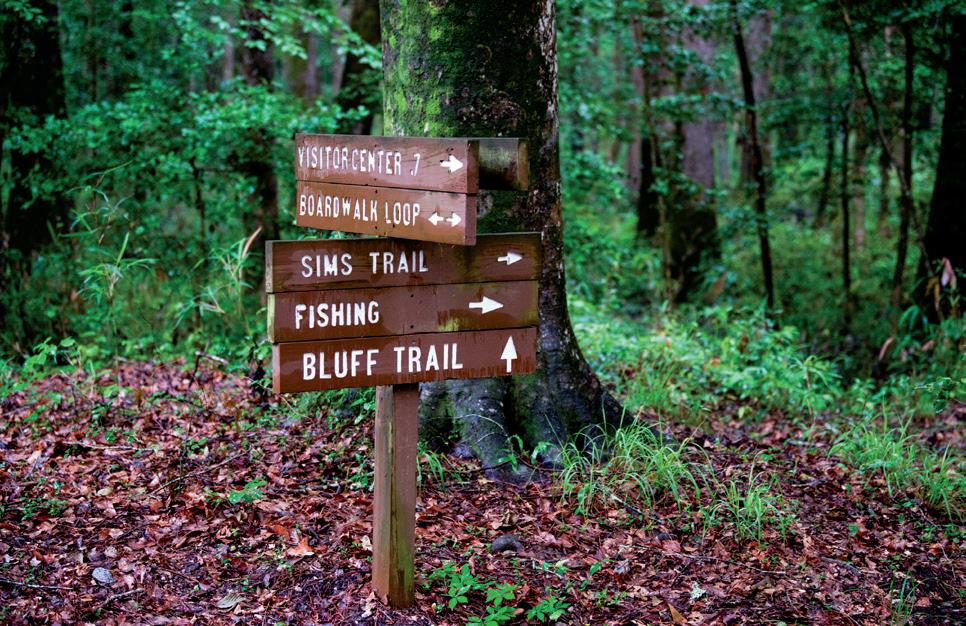


MAGIC IN THE DETAILS
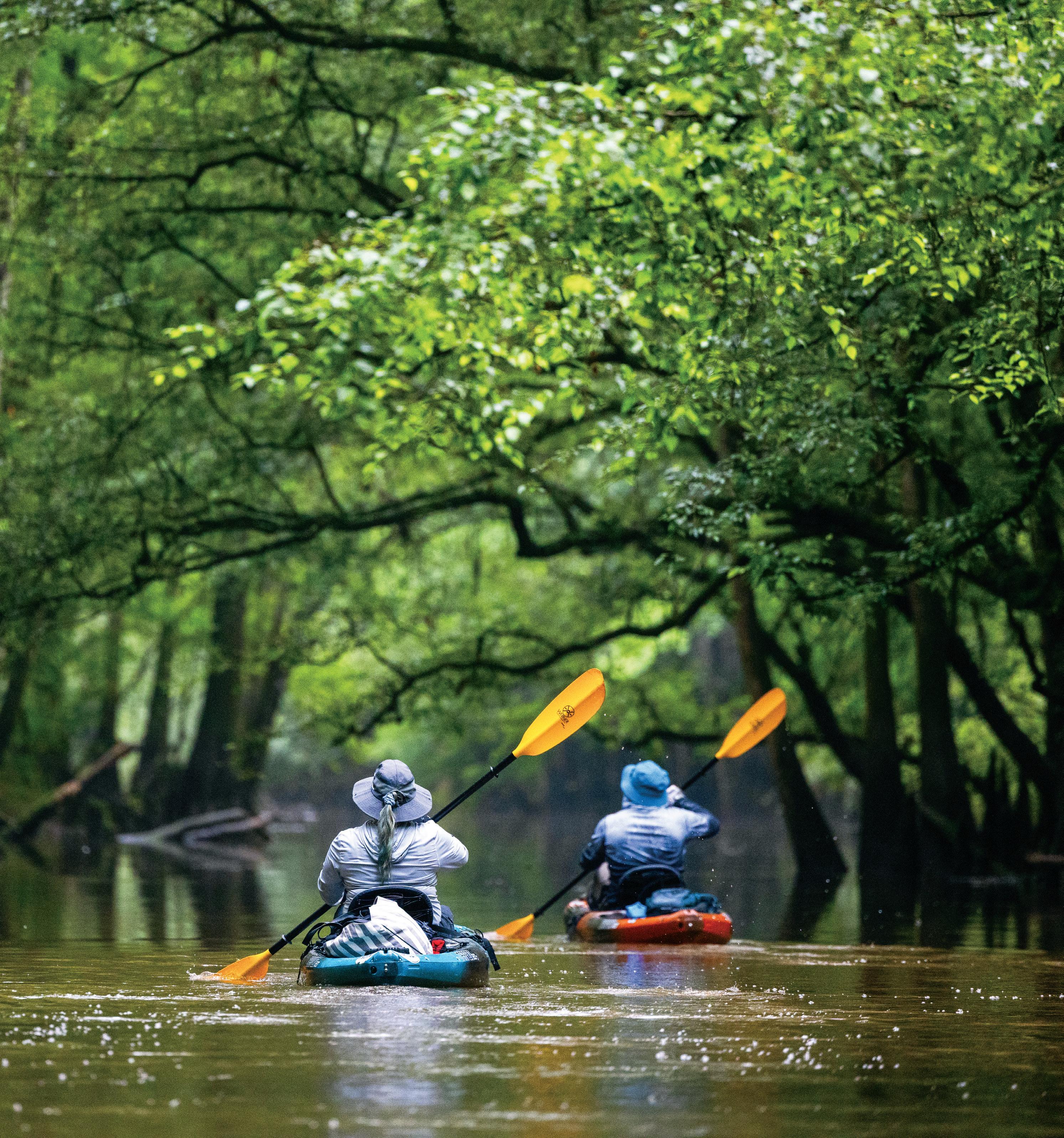
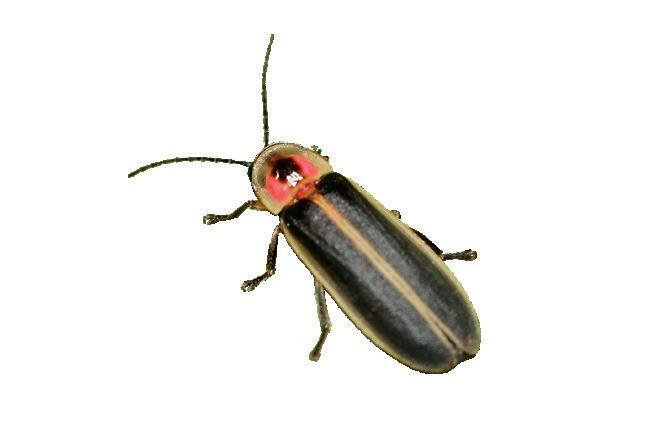
CAMERON SABIN SLIPS HIS CANOE DOWN CEDAR CREEK, leading a group of intrepid paddlers on an early morning trip through Congaree National Park. They float past towering oaks, majestic tupelos and ancient water cypresses with their distinctive knobby knees.
A barred owl looks down curiously from its perch. A blue heron hunts silently in the shallows. And a brown spider, as big as your hand, works diligently on its web.
Sabin has seen all the postings from would-be travel influencers on YouTube, shutterbugs on Instagram and disgruntled reviewers on Yelp Congaree National Park is one of the nation’s worst. He shakes his head and says, “They’re just not looking hard enough.”
The park’s reputation bubbled up from the depths of the internet and spread like a flood across social media. The complaints are many: There’s nowhere to park an RV. The park is dang hot in the summertime. It’s easy to get lost on oftenflooded trails. It’s filled with spiders and snakes. And sometimes it’s so thick with bugs that the “mosquito meter” at the visitor center springs from “all clear” to “war zone.”
“A hellscape,” wrote one traumatized visitor. “There were literally spiders everywhere! One of the most terrifying experiences of my life.”
The complaints are justified, Sabin says. But what did you expect from a swamp in South Carolina?
Sabin makes his living online and considers himself an expert on such matters. He holds a degree in biology from Clemson, lives in Columbia and has produced more than 200 videos on YouTube for his National Park Diaries channel, which has more than 82,500 subscribers. Although a local boy, raised in Charleston, he addresses issues facing national parks from Hawaii to Maine. And he’s well aware of the online haters of his hometown park, which sits only about a half-hour southeast of the state capital city.
Congaree is “a victim of people’s expectations,” Sabin says. “They don’t know what they are looking at.”
Those expectations spring from what many people think a national park should be “monumental” like Yellowstone and Yosemite, filled with mountains, waterfalls, geysers or

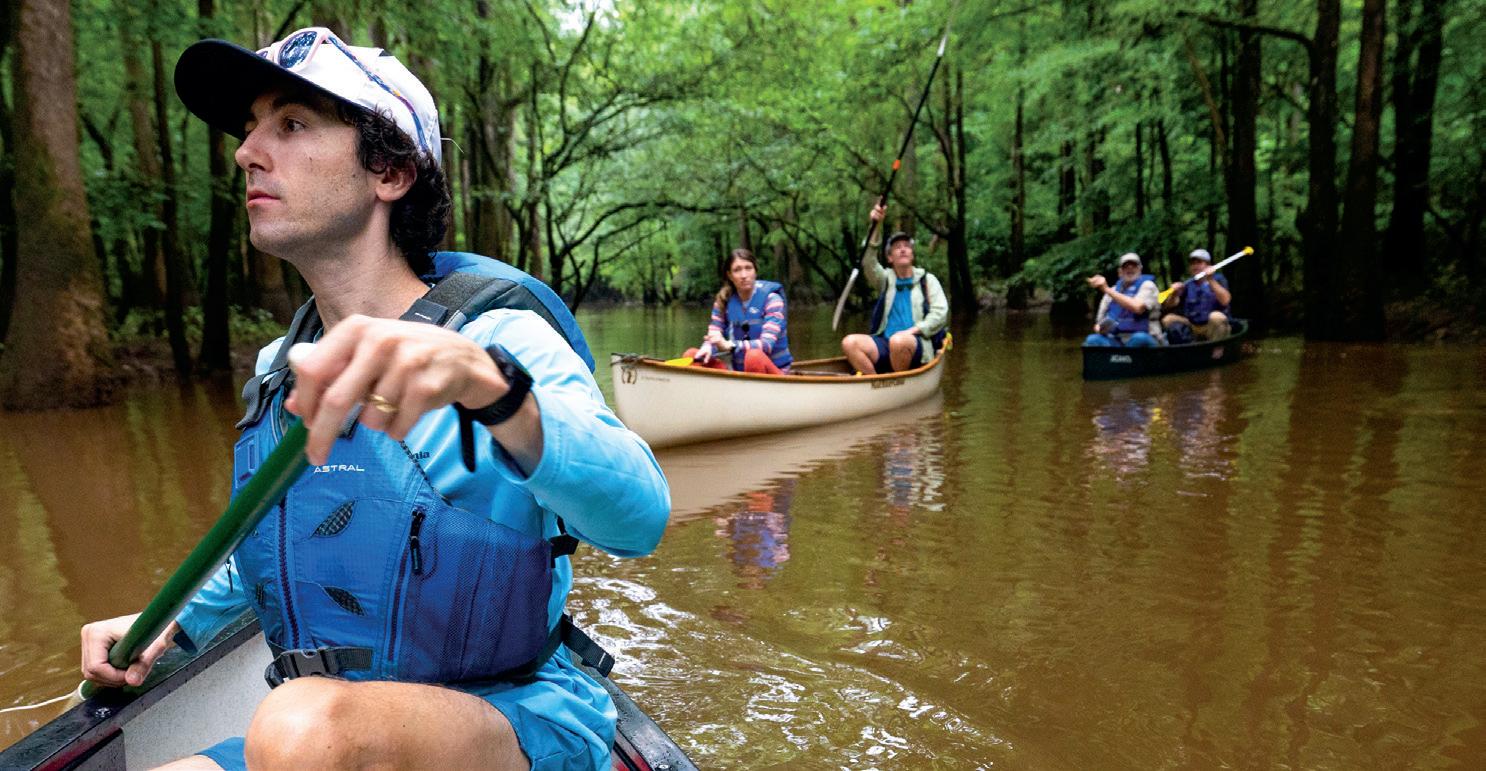
Embracing America’s best ‘worst’ national park
BY JEFF WILKINSON | PHOTOS BY THOMAS HAMMOND
canyons. They should have breathtaking vistas and be teeming with animals like buffalo, black bears and elk.
But Congaree’s appeal is more subtle and serves a different purpose, preserving an endangered ecosystem that has remained largely untouched since the first humans wandered in 10,000 years ago. At 27,000 acres, it is the largest and one of the last remaining old-growth bottomland hardwood forests in the country, a landscape that once covered millions of acres on the East Coast before loggers moved in to harvest the giant pines, oaks and bald cypress trees.
Its beauty is dark, sometimes hard to see, hidden in sloughs, creeks and oxbow lakes. It’s best experienced by boat, particularly when flooded, or late at night on darkened trails when owls call from the towering trees. It is a mysterious place, a wilderness so remote that runaway enslaved people would hide there and bootleggers found it ideal for stashing stills. And some even claim the cypress knees turn into gnomes at midnight and roam their watery kingdom.
Unlike many national parks, admission is free, the gates are always open, and if you want to take a hike at 2 a.m., you’re welcome to do it. Just make sure you’re with a friend or uu
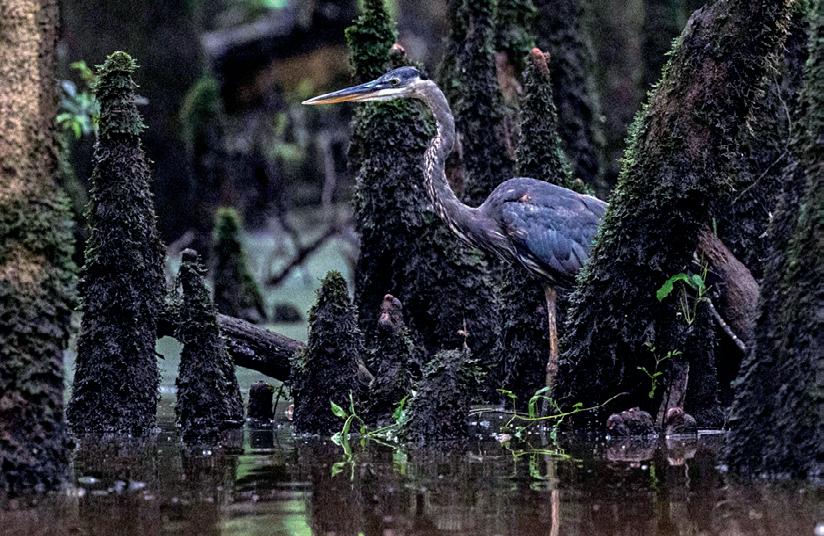

CONGAREE MAGIC
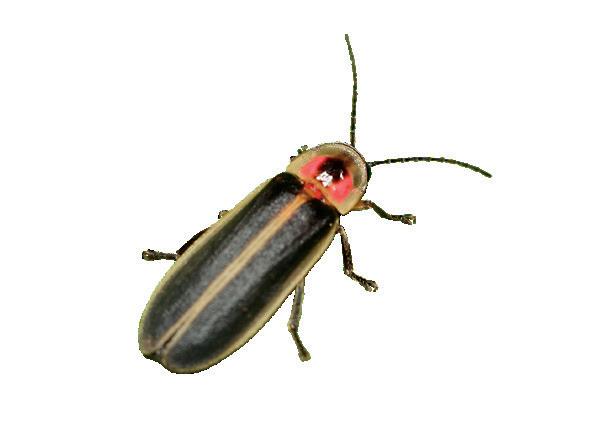

“The beauty is in the little details.” —FRAN RAMETTA
group and have plenty of food and water. It’s easy to get lost and might get a little dicey, with the alligators, wild boar and all. It’s not for the faint of heart.
“It’s one of the last great wild places in the Southeast,” says Fran Rametta, who first came to the park in 1980 when it was still known as “Congaree Swamp.” Rametta helped cut trails through the forest and build the boardwalk with volunteer labor. He started the nighttime owl walks that are still held today and watched the visitor center being built years later. Despite the improvements, 90% of visitors still experience less than 1% of the park’s deep wilderness.
“Once you’re immersed in it, it fuels your primitive instincts,” Rametta says. “The beauty is in the little details. The dragonfly that lands on your finger. The reflection of the pools in flood. The lizard that changes color before your eyes. You get to see miracles.”
Congaree National Park do’s and don’ts
Here are pro tips to make your trip to Congaree National Park more enjoyable.
PICK YOUR TIMES. The park changes from month to month and day to day. Avoid the summer months unless you’re prepared to battle heat and mosquitoes.
CHECK BEFORE HIKING. The park floods often, so check for updates on the park’s condition and trail statuses.
BRING A MAP. Cellphone service is spotty. Get a map from the visitor center before straying off the boardwalk.
FOLLOW A GUIDE. Book a canoe trip down Cedar Creek or go on one of the park’s nighttime owl walks.
SEE THE FIREFLIES. For two weeks a year in late spring, rare synchronous fireflies put on their mating show. But you’ll need to enter a lottery to get admission.
WEAR BUG SPRAY. Bugs can be a nuisance, particularly in summer. But only apply bug spray in the parking lot. You don’t want to drive off the fireflies!
LOOK CLOSELY. The beauty of the park is in the details.


Home to rare beauty
Efforts to preserve Congaree began in the 1950s, when Harry Hampton, a conservationist and writer for The State newspaper, and others began campaigning to save the land from the imminent threat of logging. It and other vast tracts of bottomland were owned by forestry mogul Francis Beidler, and Congaree survived in part because it was just too hard to get to.
With help from the Sierra Club and other conservation groups, Congaree was designated a national natural landmark in 1974, a national monument in 1988, an international biosphere reserve in 1983 and the country’s newest national park in 2003.
The park’s designations are warranted. It has the largest concentration of “champion” trees in the country 25 of the tallest trees of their species in a canopy that rivals the rainforests. They include a loblolly pine as tall as a 17-story building and bald cypress trees that are more than 500 years old. There may be more champions, because most trees hidden deep in the forest have never been measured. That remoteness, while frustrating for some casual visitors, is beneficial for the trees. It protects their roots from the trampling feet of well-meaning guests and the pocketknives of those who might want to leave their marks on a champion tree.
The park, which is covered by Tri-County Electric Cooperative territory, is also home to a staggering array of birds that feast on the bugs and other critters that thrive there. Woodpeckers and owls are in abundance, drawn by the tall trees. It was one of the last known habitats for the ivorybilled woodpecker, now extinct, and the very much endangered red-cockaded woodpecker, last seen in the park in the 1990s. Predatory eagles and hawks patrol the skies. Wading birds, such as herons, egrets and ibis, ply along its creeks and sloughs. And migratory birds as rare as wood storks have been spotted passing through.
Congaree is one of only three known publicly accessible places in the nation, along with the Great Smoky Mountains and a portion of southwestern Arizona, that are home to large numbers of synchronous fireflies. For about two weeks each spring, the rare lightning bugs flash in unison to attract mates, then, sadly, die shortly after. Since 2021, an annual lottery has been held to limit the number of people who travel from around the country and the world to witness the rare phenomenon. Columbia’s minor league baseball team is even named the Fireflies after the intriguing bugs.
Artist Lindsay Lindhult of New Jersey visited this past May to see the fireflies in action. She holds a doctorate in biology, illustrates arthropods for academic journals and researchers and even has a great black digger wasp tattooed on her left arm. (“Bugs are so misunderstood,” she says.)
Visiting Congaree was “a bucket list thing for me,” Lindhult



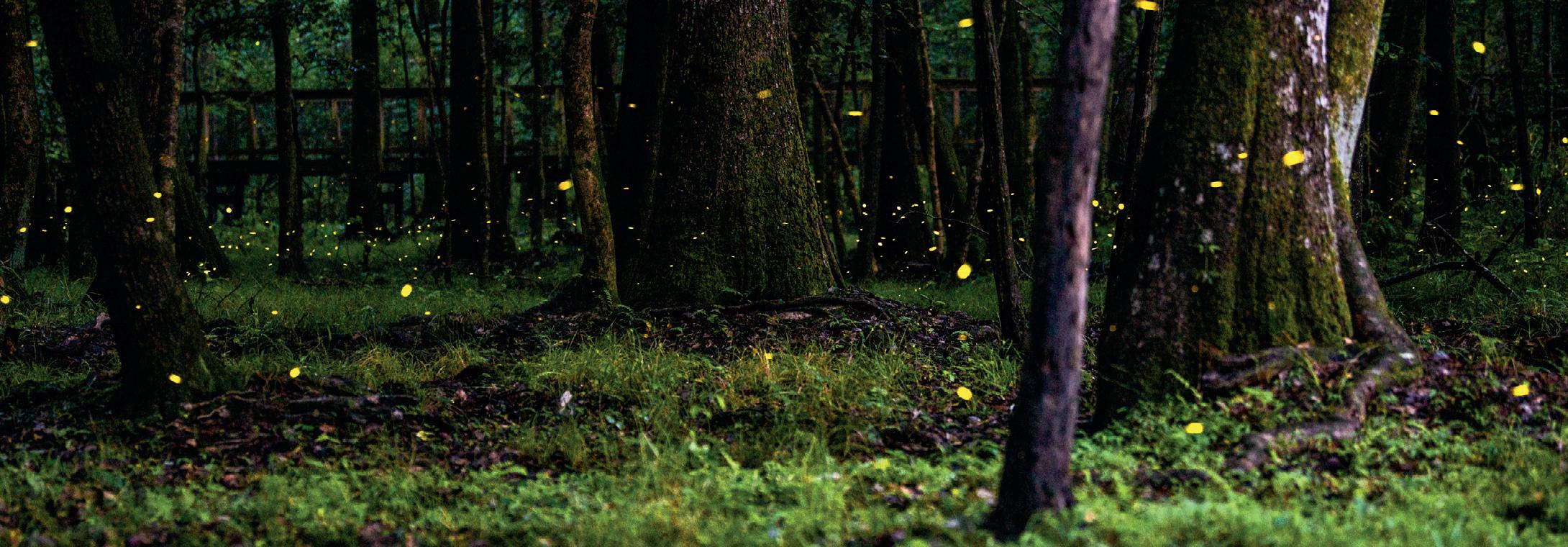
says. She calls the park “awesome” and says the claims that it is the worst are “nonsense.”
“It’s one of the most unique national parks I’ve ever been to. It’s cozy and human-sized,” Lindhult says.
‘Check your expectations’
But none of that matters to the online haters, who seem surprised that snakes, alligators and spiders big ones might thrive in a “swamp.” (Well, it’s not technically a swamp, but who’s to argue?)
One online voice complained that children should be left at home to avoid any interaction with snakes. Another suggested the park should regularly spray for bugs and cut down trees to improve the views of the river. And yet another groused that it was hard to nd a convenient spot to take a sel e.
“No amazing Instagram shots,” the post says.
To address the online haters, park rangers have taken to social media as well, posting on Facebook both the most scathing reviews and their responses. “It appears we are not beating the ‘Worst National Park’ allegations anytime soon. So, we’re addressing (it) once again,” park of cials write.
“Please … check your expectations just before your visit during our hottest, buggiest time of year. Please don’t forget that it oods sometimes, that it does get quite hot here in the summer, that you may see snakes, spiders, and alligators, and that you may get a mosquito bite or 12.
“We here at Congaree understand our park just has a little too much nature for some visitors, and that’s okay! We love our real fans and even our haters all the same. See you soon!”
Owning the ‘worst’ and working for better No publicity is bad publicity, the thought goes, “So we just decided to own it,” says park superintendent Greg Hauburger.
The park even applied to National Park Service higherups to begin printing T-shirts that goof on the “worst national
park” theme. No word yet on whether the bureaucrats will buy it.
FIREFLY FEST For about two weeks each spring, rare synchronous fireflies light up Congaree with their annual
Columbia Fireflies

The park also is continuing to make improvements so it is more accessible for tenderfoots. It has embarked on a $4.6 million program to rebuild about three-quarters of the 2.6-mile boardwalk, which is all many visitors experience. Some lower sections that often are covered by oods are being raised to give the casual guest an opportunity to see the park inundated with water which is the oodplain’s function in nature and which nourishes the champion trees.
Of cials also are emphasizing the upper level of the park above the bluffs, a separate ecosystem of Southeastern pine forest that is home to deer, fox squirrels and other wildlife. They conduct frequent controlled burns to replace the wildres that once occurred naturally and are ghting to control non-native, invasive plants. One goal is to provide a more welcoming environment for the endangered red-cockaded woodpecker, which has been spotted, oddly enough, at the nearby Fort Jackson military base in Columbia.
National parks advocate Sabin, who led canoe and kayak trips through Congaree while building his online presence, understands why some people are put off by the park. “We’ve got a lot of things that people don’t like spiders, snakes and mosquitoes,” he says.
But for those who come at the right time and have an eye for the details, magic can happen.
“There’s a power there,” he says. “You just have to look at it in a different way.”
GET THERE The entrance to Congaree National Park is located at 100 National Park Road, Hopkins. Learn more at nps.gov/cong.
SCLiving.coop/calendar
Our mobile-friendly site lists even more festivals, shows and events. You’ll also find instructions on submitting your event. Please confirm information with the hosting event before attending.
Upstate
AUGUST
23 Japanese Bon Dance Festival, McAlister Square, Greenville. jaasc.org/ events/bon dance festival.
25–26 Rock the Country Festival, Anderson Sports & Entertainment Center, Anderson. (864) 260‑4800 or andersonevents.com.
30 Upstate Food Truck Festival, Reedy Fork Fairgrounds, Simpsonville. scupstatefoodtruckfestival.com.
30–31 Dacusville Farm Show, 3147 Earls Bridge Road, Easley. (864) 855‑9944 or dacusvilleheritageassociation.org.
31 Celebrate Anderson, William A. Floyd Amphitheater, Anderson. (864) 260‑4800 or andersonevents. com/celebrateanderson.
SEPTEMBER
5–6 South Carolina Apple Festival, Main Street, Westminster. scapplefestival.com.
5–6 Uniquely Union Festival, downtown, Union. (864) 466‑6769 or uniquelyunion.com.
5–21 Grease, Spartanburg Little Theatre, Spartanburg. (864) 585‑8278 or spartanburglittletheatre.com.
11–28 Come From Away, Centre Stage, Greenville. (864) 233‑6733 or centrestage.org.
12–13 Sooie BBQ Cook-Off, downtown, Mauldin. (864) 404‑3291 or mauldinculturalcenter.org.
12–14 Indie Craft Parade, 701 Easley Bridge Road, Greenville. indiecraftparade.com.
12–14 Upstate Renaissance Faire, Piedmont Interstate Fairgrounds, Greenville. upstaterenaissancefaire.com.
13 Music on the Mountain, Table Rock State Park, Pickens. (864) 878‑9813.
18–21 101 Dalmatians Kids, Greenwood Community Theatre, Greenwood. (864) 229‑5704 or greenwoodcommunitytheatre.com.
19–20 Old Time Fiddlers Convention, Hagood Mill Historic Site, Pickens. visithagoodmill.com.
19–21 Spartanburg Greek Festival, St. Nicholas Greek Orthodox Church, Spartanburg. spartanburggreekfestival.com.
19–Oct. 12 Gutenberg! The Musical!, The Warehouse Theatre, Greenville. (864) 235‑6948 or warehousetheatre.com.
20 Union County Farm Show, Union County Fairgrounds, Union. (864) 466‑5533 or facebook.com/ unioncountyfarmshow.
21 Hispanic Heritage Festival, Fluor Field, Greenville. (864) 402‑4207 or ahamsc.org/hhf.
27 Harvest Day Festival, downtown, Inman. (864) 472‑3656 or inmanchamber.com.
27 Railfest, Greer City Park, Greer. (864) 848‑2150.
27–28 Pickens Jeep Explosion, Market at the Mill, Pickens. (864) 397‑0553 or pickensjeepexplosion.com.
Midlands
AUGUST
22–23 Eutaw Village Festival, 220 Porcher Ave., Eutawville. (803) 492‑3374.
22–24 Freedom Festival International, Senate’s End, Columbia. (803) 234‑0546 or filmfreeway.com/freedomfest 1.
23 Main Street Latin Festival, Main Street, Columbia. mainstreetlatinfestivalsc.com.
23 Native American Lifeways Tour, 1120 Fort Congaree Trail, Cayce. (803) 739‑5385 or cayce12000years.com.
23 York Summer Fest, downtown, York. (803) 984‑2645 or yorkscsummerfest.com.
23–24 Sandy Oaks Pro Rodeo, Lazy J Arena, Edgefield. (803) 637‑5369 or sandyoaksprorodeo.com.
29–30 244th Anniversary Commemoration of the Battle of Eutaw Springs, downtown, Eutawville. (803) 898‑3378 or southcarolina250.com/ upcoming events.
29–31 South Carolina Quarter Horse Association Sandlapper Classic, South Carolina Equine Park, Camden. scquarterhorse.com.
30 Civil War Battle of Congaree Creek Tour, 1120 Fort Congaree Trail, Cayce. (803) 739‑5385 or cayce12000years.com.

30–Sept. 1 Chapin Labor Day Festival & Parade, downtown, Chapin. (803) 345‑2444 or facebook.com/chapinlaborday.
SEPTEMBER
5–6 Aiken’s Makin’ Arts & Craft Show, Park Avenue, Aiken. (803) 641‑1111 or aikenchamber.net/aikensmakin.
5–6 The Big Grab 50 Mile Yard Sale, Blythewood, Ridgeway and Winnsboro. (803) 635‑4242 or facebook.com/thebiggrab.
13 Savor Sumter Gourmet Burger Cook-Off, Brody Pavilion, Sumter. (803) 847‑5834 or palmettooptimistclub.com/ burgercookoff.
13–14 Midlands Fall Arts & Crafts Market, South Carolina State Farmers Market, Columbia. midlandcrafters. wixsite.com/mca craft shows.
13–Oct. 5 The 25th Annual Putnam County Spelling Bee, Workshop Theatre, Columbia. (803) 799‑4876 or workshoptheatreofsc.com.
14 Soldier’s Sprint 5K, Sesquicentennial State Park, Columbia. (803) 788‑2706.
18–21 Columbia’s Greek Festival, Holy Trinity Greek Orthodox Cathedral, Columbia. (803) 461‑0248 or columbiasgreekfestival.com.
19–20 Camden Coin Club Fall Show Spectacular, Camden City Arena, Camden. (803) 713‑5311 or camdencoinclub.com.
20 McCormick Gold Rush Festival, downtown, McCormick. (864) 852‑2835 or facebook.com/gold.rush.29835.
20 Jubilee: Festival of Black History and Culture, Mann Simons Site, Columbia. historiccolumbia.org/jubilee.
AND THE CROWD GOES WILD Enjoy a roarin’ good time at Zoofari at Riverbanks Zoo & Garden on Sept. 26.
20 Palmetto Peanut Boil, 2900 block Devine Street, Columbia. animalmission.org.
25–27 Raylrode Daze Festivul, downtown, Branchville. (843) 830‑9962 or raylrodedazefestivul.com.
26 Zoofari, Riverbanks Zoo & Garden, Columbia. (803) 779‑8717 or riverbanks.org.
26–27 The Irmo Okra Strut, Moore Park, Irmo. okrastrut.com.
26–Oct. 18 Choir Boy, Trustus Theatre, Columbia. (803) 254‑9732 or trustus.org.
27 Catawba Fest, Catawba Park, Tega Cay. tegacaysc.org.
28 Soweto Gospel Choir, Newberry Opera House, Newberry. (803) 276‑6264 or newberryoperahouse.com.
30–Oct. 5 Orangeburg County Fair, Orangeburg County Fairgrounds, Orangeburg. (803) 534‑0358 or orangeburgfair.com.
Pee Dee & Lowcountry
AUGUST
20 28th Annual Kids’ Day, Cross High School, Cross. (843) 214‑1160 or checkorgsc.com.
23 Art of Jazz: Bob Lanzetti, Gibbes Museum of Art, Charleston. (864) 641‑0011 or charlestonjazz.com.
29–30 Edisto Beach Music & Shag Fest, Bay Creek Park, Edisto Island. facebook.com/ edistobeachmusicshagfestival.
29–30 Waves of Praise Gospel Fest, Burroughs & Chapin Pavilion Place, Myrtle Beach. mbwavesofpraise.com.
29–31 Lowcountry Jazz Festival, Charleston Gaillard Center, Charleston. (843) 242‑3099 or lowcountryjazzfest.com.
SEPTEMBER
2 Jazz in the Park: John Brackett Quartet, Celebration Park at Coligny, Hilton Head Island. (843) 842‑2055 or hhso.org.
3–28 The Sound of Music, Charleston Stage, Charleston. (843) 577‑7183 or charlestonstage.com.
9 Music in the Park, Hemingway Ballfield, Hemingway. (843) 558‑2824 or townofhemingway.org.
12–21 Society of Stranders Fall Migration Shag Festival, various locations, Myrtle Beach. shagdance.com.
13 Moore Farms Beer Fest, Moore Farms Botanical Garden, Lake City. (843) 210‑7582 or moorefarmsbg.org.
14 Edisto Island Concerts: Music for Wind Quartet by Beethoven and Devienne, Edisto Presbyterian Church, Edisto Island. chambermusiccharleston.org.
18–20 Yemassee Shrimp Festival, downtown, Yemassee. townofyemassee.org.
20 Aynor Harvest Hoe-Down Festival, downtown, Aynor. aynorhoedown.com.
20 Crossroads Music & Market, Village Green, Lake City. (843) 374‑8611 or lakecitysc.org.
25–Oct. 5 MOJA Arts Festival, multiple venues, Charleston. (843) 724‑7305 or mojafestival.com.
26–28 Atalaya Arts & Crafts Festival, Huntington Beach State Park, Murrells Inlet. (843) 237‑4440.
27 Irish Italian Festival, Main Street, North Myrtle Beach. (843) 280‑5570 or nmb.us/164/parks recreation.

















6:45 12:34 7:06 12:55
7:30 1:20
5:15 11:51 5:39
6:04 12:17 6:29








AUGUST IN THE GARDEN
n The summer heat is still lingering, but despite the sizzle, this month is a good time to start such cool-season veggies as turnips, radishes, spinach, rutabagas, garden peas, mustard, collards, kale, mustard greens, cauliflower, broccoli, beets, cabbage and carrots.
n If fall webworms are turning your trees into an undesirable state of ugly, for an allnatural way to put the lights out on their parties, use a long pole to rip open their protective tents so efficient predators such as birds and wasps can get in to feast on the beasts.

is
TIP OF THE MONTH Does the idea of growing biennials, such as hollyhocks, from seeds intrigue you? Well, if you have the patience of a fisherman, here are a few more biennials to start this season:
Foxglove (Digitalis purpurea). A classic springtime showoff that sports towers of bold, tubular flowers.
Sweet William (Dianthus barbatus). Another spring beauty with dense clusters of bright, often bicolor, blooms.
Money Plant (Lunaria annua). Pleasingly purple flowers give way to thin, round seed pods, which, when peeled, shine like silver dollars.
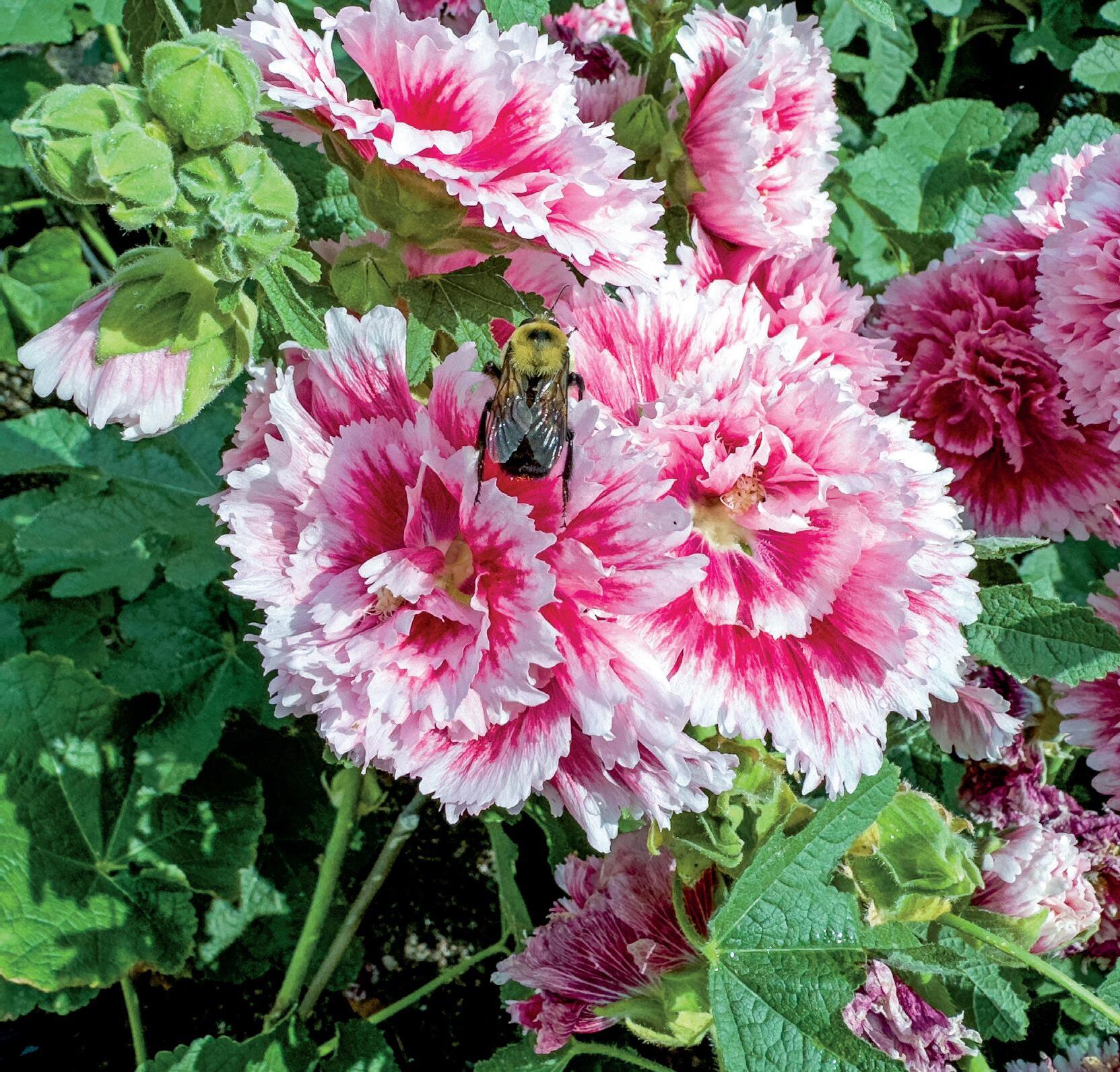
The hollyhock challenge
BY L.A. JACKSON
HOLLYHOCKS (Alcea rosea) are not for fair-weather gardeners. Why? These plants attract pests such as slugs, sawflies, Japanese beetles, spider mites, weevils and leaf miners, while diseases such as rust and powdery mildew can also be problems.
And then, well, hollyhocks just grow weird. The most common varieties are biennials, meaning if they are seeded this growing season, you have to wait until next year for any ocular satisfaction.
While they can sometimes be a challenge, the rewards you reap visually are certainly worth it because, dang it, hollyhocks are plum pretty in full bloom.
For years, I’ve held my own in protecting hollyhocks against many bad bugs with well-timed sprays of pyrethrins or insecticidal soap. And slugs have not been much of a problem when I lace the surrounding ground with iron phosphate-based slug pellets.
Disease-wise, yes, rust is a common hollyhock problem, but resistant cultivars are available to help counter this crud. And powdery mildew (as well as rust) can be discouraged by planting in a sunny, open area to improve airflow through the leaves. I am also quite a plant hawk when it comes to hollyhocks, meaning if I see any distressed leaves, I pluck ’em and chuck
’em to prevent the spread of any foliar nastiness.
So, are you up for the challenge? Since they are biennials, this month into early fall is a good time to start hollyhocks from seed. Prepare a planting site by generously mixing compost or a commercial organic soil conditioner deep into the growing ground. And since they germinate better in bright sunlight, just scatter the small, round seeds and then lightly press them into the ground. In the scorching heat of a waning summer, regular waterings are a must.
When small sprouts appear, pat yourself on the back for being such a good seed starter, and then thin the young plants so they are spaced at least 2 feet apart because standard hollyhocks can easily stretch upward 5 to 7 feet tall and have a spread of about 2 feet wide.
Newbie hollyhocks will spend winter developing strong taproots, and by the new spring, flower towers should arise to support an explosion of single or double blooms that will be butterfly, bee, hummingbird and, yes, even gardener magnets!
L.A. JACKSON is the former editor of Carolina Gardener magazine. Contact him at lajackson1@gmail.com.





Which way to the buzzard buffet?
BY JAN A. IGOE
FOR YEARS, I DREAMED OF a fenced backyard where my darling dogs could romp in the sunlight, torment squirrels and dig to China as nature intended. Translation: I could throw the mutts out without even getting out of my pajamas, before they irrigate the Berber. (Sounds harsh, but walking them 27 times a day gets old.)
No sooner did I move to my fenced paradise and release the hounds when the first harbinger of doom weighed in. “Watch out for the vultures,” the neighbor I hadn’t met yet shouted through the fence. “It’s lunchtime.”
“It’s OK. These are live animals,” I yelled back.

“Honey, beach vultures don’t wait around,” she said. “They like fast food.”
My brain struggled to wrap itself around the idea that flocks of carnivorous birds began fortifying their positions the moment Two Men and a Truck backed into my driveway. Hitchcock warned us about that.
That didn’t sit well, so I dismissed my neighbor as a nut. She could be one of those women who allegedly spent 94 hours in labor with a 13-pound breach baby delivered by cesarean during a hurricane by a roofer with a chainsaw. At least that’s what her kind likes to tell newly pregnant females as they run away screaming.
So I remained calm until a happiersounding neighbor complimented my 9-pound mutt. “The vultures just love them,” he added. “Those are snack size. They just need a little ketchup.”
That’s when I realized the feathers strewn around my yard didn’t belong to sparrows. Above my head, a black,
The feathers didn’t belong to sparrows. Above my head, a black, winged monster was zeroing in on my dogs from a tree.
winged monster was zeroing in on my dogs from a tree.
“There’s no ketchup here,” I screamed at the invader, waving my arms and leaping around, clanking pot lids together in a vain attempt to scare it off. The bird didn’t flinch a feather. My dogs, however, ran inside and hid.
Frantic, I turned to the internet for advice from genuine vulture victims who had experience keeping killer birds away. They recommended:
Setting off fireworks around the clock.
Dangling a dead colleague (of the vulture) in effigy.
Hanging lots of shiny CDs from branches.
Shaking vulture-bearing trees at least twice a day. Intriguing ideas, but there’s a downside. The guy who tested M-80s as a bird deterrent also set his home on fire. And the birds came back before the fire trucks got there.
Hanging CDs is harmless, but the movement that’s supposed to scare the birds off makes some of them want to hang around and invite their friends.
Pecking the CDs becomes a game, so the more, the merrier. The icing on the cake is watching you try to shake their tree, which is 70 feet tall and 8 feet around. Now that’s a total entertainment package. No matter what you do, the birds may decide to stay. Just ask the Virginia man who woke up one day to hundreds of vultures staking claim to his yard. He can’t have them removed, because they’re federally protected. So he’s sharing his patio with 200 winged guests and not doing much outdoor grilling.
Anyway, I came up with my own deterrent. It took only 90 minutes to wrap my dog up in his own anti-bird aluminum foil vest. It’s the same principle as the CDs, but now my dog is the shiny moving object. My daughter says it won’t work unless the vultures are afraid of furry baked potatoes.
I’d argue, but the birds have been asking for sour cream and chives.
EDITOR’S NOTE: South Carolina Living is reprinting some of Jan A. Igoe’s previous columns. This “Humor Me” originally appeared in the September 2013 issue. Visit SCLiving.coop/news/ in memory of jan igoe








